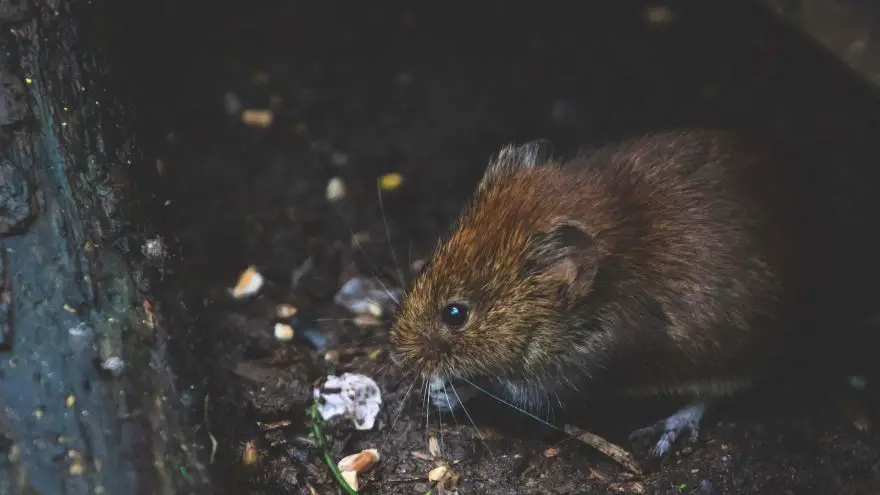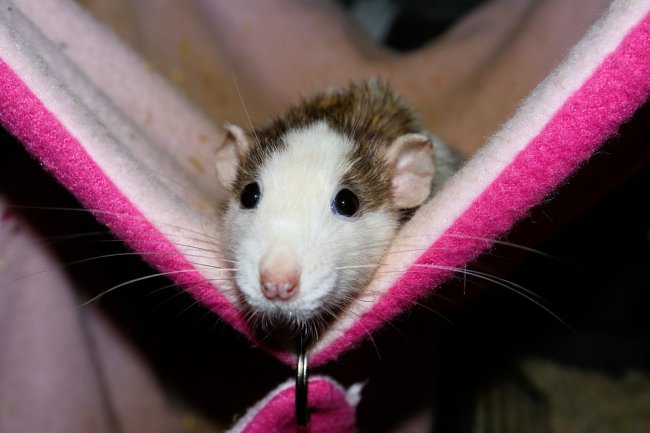Rat Breeds: How to Know Which is the Right One For You
 Rat Breeds: How to Know Which is the Right One For You
thegearhunt.com
Rat Breeds: How to Know Which is the Right One For You
thegearhunt.com
Did you know that rats actually make great pets? If you have been wanting to get a pet for your home, but don’t want to clean up after a dog or cat that will shed everywhere and may or may not use the bathroom outside or in the litter box, then one of the many rat breeds out there that make great pets might just be the ticket for you. There are quite a few different rat breeds out there for you to choose from as well.
When you start researching rat breeds that you might want to adopt from, you will come across many different varieties. In this blog, we will go into a few of those different breeds so that you have a better understanding of the breed itself. Not only that, we will go into a few tips on how to choose the right pet rat for you and your family as well. So, if you’re considering adopting a pet rat for your home, pull up a chair, grab your coffee and join us on our journey into the world of pet rat breeds and everything you should know.

Different Pet Rat Breeds
There are quite a few breeds of domestic rats around the world and believe it or not, they have been found to be just as intelligent and sociable as other rodents, such as guinea pigs, rabbits, and hamsters. Rats get a bad name because they are portrayed as dirty, rabies-ridden, vicious creatures, and in some cases that can be true.
You don’t want to find a rat in the field next door and make it a pet, because that will be dangerous to you and your family, but there are many different breeds out there that you can adopt from a reputable pet store and make your own. Below, we will go into a little bit about the different breeds so you can see what we’re talking about.
Top-Eared Rats
At one time, all rats had their ears on the top of their heads, then the dumbo mutation was found, which we will talk about next, and that changed. This is also the normal ear position seen in wild rats. When your pet rat is happy, their ears will be upright and alert, when they are angry or distressed they will lay them back instead.
The Domestic or Fancy Rat
This breed is also known as the common rat because they have not been through any type of mutation. Their bodies are long, slim, and round and their whiskers are very straight and smooth. They are usually born with dark brown, white, or black coats and have very long tails that are thin.
The Manx Rat
The Manx rat is a popular choice as a pet as well. They are super easy to spot because they are born without tails or either has a very small stub as a tail instead. They are quite a bit smaller than the common rat, and their bodies tend to be a little rounder and shorter as well. It is important to note with this breed, however, that rat’s tails are used to regulate their body temperature and help them maintain their balance. Since the Manx rat doesn’t have one, or much of one, they are super-dependent on their owners and you need to be really attentive to them. The lack of a tail also means these rats are more prone to disease than others as well.
 The Bald or Hairless Rat
The Bald or Hairless Rat
Hairless, also known as bald rats are genetically made to be bald and their skin is smooth when you touch it. However, they do tend to have a wisp of curly fur by their whiskers, which are also short and curly. The skin color of the hairless rat you choose will be determined by the genes they have as well.
There are some health concerns associated with bald rats as pets, however. Since they have no fur, they are more susceptible to the cold than most rat breeds and therefore need to keep more active in order to stay warm. Also, since they have no eyelashes to keep dirt and debris from blowing into their eyes, they are more prone to eye problems than most. They can also be difficult to find in some countries, as some have banned hairless rats, so make sure they are legal where you live before you decide to try and adopt one as a pet.
The Dumbo Rat
Named after the elephant in the movies Dumbo, because of their big ears, the dumbo rats ears are lower down on its head and they are much stockier than top-ear rats. There have been rumors that the dumbo rat is tamer than the top-eared rats and that they live longer as well. These rumors have been proven to be untrue. How tame your pet rat is and how long it lives comes down to the way you take care of your pet and the family line they come from.
The dumbo rat usually has fur in the colors of light grey, light brown, dark grey, and white.
The Rex Rat
Considered to be one of the largest domestic rats, the Rex rat is said to make a great pet for anyone. They have lots of hair that cover their entire body, except for their bellies. There are also double Rex rats, however, which are mostly bald.
The Satin Rat
Satin rats are also said to make the perfect pet, as they feel like you are touching satin with their unusually long, fine fur. They give off the appearance of an unusually shiny or even sparkly fur, making them a joy to look at and to own as well.
The Self Rat
Self rats are rats that are all one color, though they may have different markings on the underside of their bellies.
The Marked Rat
Marked rats are rats that are marked in some way or another and can make good pets as well. Below you can find a few other marked rat breeds you might want to adopt as pets.
- Berkshire
- Irish
- Hooded
- Capped
- Blazed
- Roan
- Black-eyed white
These are just a few of the many domestic rat breeds out there for you to choose from when adopting a pet rat. Next up, we will talk about how to choose the right pet rat for you.
Decisions to Make When Choosing a Pet Rat
When it comes to choosing a pet rat, there are a few decisions you should make ahead of time. Read on below to find out what those decisions should be.

Boys or Girls?
The first and perhaps the most important decision you should make when deciding on adopting a pet rat is whether you want boys or girls. Unless you want lots and lots and lots of babies, you better choose one or the other. Remember, female rats can get pregnant as early as five weeks of age. So, if you’re not prepared to have quite a few rats to take care of, you better make a decision between boys and girls first and foremost.
How Many Do You want to Care For?
It’s important to note that rats are very social creatures, so you should never choose to adopt only one. At the least you should have two, making sure that they are the same gender, of course. If you have the space for it, it’s better to get three or four when you’re first starting out. This stops them from being alone but gives you time to get used to caring for the critters as well.
Where Should You Adopt Your Pet Rats From?
Another decision that you should consider is where you’re going to adopt your pet rats from. There are two choices basically, the local pet store or a rat breeder. You may have better luck with a rat breeder as they are experienced with baby rats and socializing them to be held. It is important to note, that you never want to get pet rats from a breeder that won’t let you in the back to see their rattery. You want to see where the rats are bred and what conditions they are in before you make a final decision.
You may also choose to adopt your pet rats from the local pet store as well. You just need to be extra careful, as many rats don’t get a lot of human attention from an early age and may be more difficult to tame than a rat from a breeder.
The choice is yours as to which place you adopt your pet rat from, just make sure to do your research before you make a final decision.
Choosing Your Rats
Choosing your pet rats isn’t as simple as just pointing to one in a cage, and then taking it home. The best thing to do is put your hand in the cage and see how the rat acts with human contact. It’s best to present an open hand to the rats to determine if they are curious enough to come into contact. Avoid any sudden movements, so as not to scare the rats away. Any rats that come closer to your hand to investigate are good candidates for pet rats, the ones that don’t are better avoided. If you take home the rats that chose you at the store, then you’ll be off to a great start as a pet rat owner.
It’s best to avoid the rats that are skittish and shy away from your hand. Also, if any of the rats are aggressive and spit or hiss at you when you put your hand in the cage, they won’t make good pets and should be avoided. It is possible to tame aggressive rats, but it’s not recommended as they could bite or never be able to be tamed. They are best avoided, especially if the rat is a pet for a child.
Getting Your New Pet Rat Home and Set Up
Now that we know how to choose the best pet rats to suit your needs for a pet, it’s time to talk about getting your new rat home and setting it up. In order to make the transition as seamless as possible, it’s best to have your rats new home set up before you bring it to your house.
Put them in their new cage right away and then leave them alone for a couple of hours, so that they can explore their surroundings and get used to being in a strange place. Once they are settled in and have calmed down some, it’s time to spend a little quality time with them. The last thing you need to do is leave your rat unattended and alone. They are social creatures and need their cuddle time just as any other pet does.
Once they are settled, you get them to cuddle with you, so they start to get to know you and feel safe in their surroundings. Remember, that just like humans, some rats are shyer than others. It might take time and patience, but soon your pet rats will love you just as much as you love them. Make sure to spend quality time with your pet rats every day and soon you’ll wonder how you ever got along without them.
This concludes our blog on everything you need to know about the different pet rat breeds you can choose from and how to choose the right pet for you. Remember, just like any other pet out there, rats need attention and love. As long as you give it to them, they will return your affection, Until next time, happy petting everyone!
Sources
- Animallama: Pet Rat Breeds: What Type of Pet Rats Are There?
- Rat Care: Choosing Which Rats to Care For
- AnimalWised: Types of Domestic Rats















